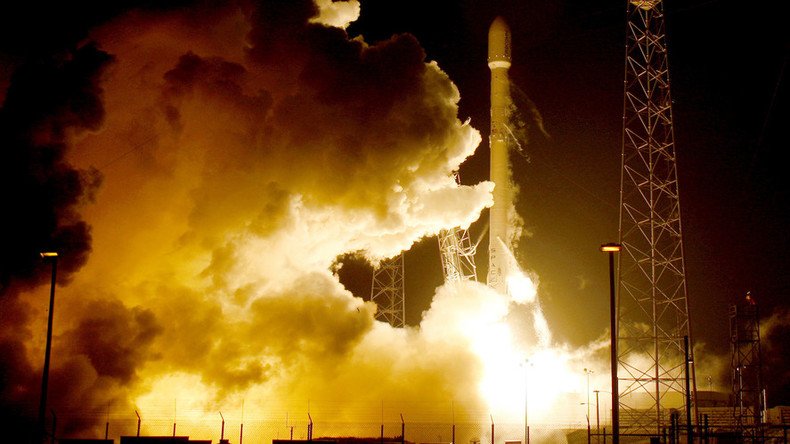SpaceX Falcon 9 comes home after successful satellite launch

Space X’s Falcon 9 rocket has taken off from Cape Canaveral with the JCSAT 16 communications satellite in tow. After launching the Japanese satellite into orbit, the rocket landed on a floating drone ship.
After the cargo was delivered into space, the rocket successfully completed the now traditional Space X rocket landing mere minutes after takeoff, with the majority of the vehicle landing on one of Space X’s floating drone ships.
JCSAT-16 comms sat deployed into planned Geostationary Transfer Orbit with 36,000 km apogee (high point in orbit) pic.twitter.com/zScDgaOSzY
— SpaceX (@SpaceX) August 14, 2016
The JCSAT 16 satellite was put into so-called geostationary transfer orbit (GTO), which makes landing the rocket a challenge, and therefore requires the drone ship to be employed.
First stage landing confirmed on the droneship. Second stage & JCSAT-16 continuing to orbit https://t.co/tdni5406Hipic.twitter.com/h6llIXSVu7
— SpaceX (@SpaceX) August 14, 2016
According to Space X, the rocket “will be subject to extreme velocities and re-entry heating,” which also necessitates the use of the drone ship for landing.
The Falcon 9 soars into the night sky!#SpaceX#JCSAT16pic.twitter.com/goBfTZIlUJ
— CosmosRevealed (@CosmosRevealed) August 14, 2016
A landing on land would would also have been fine, but SpaceX opted for the ship because these missions consume a great deal of fuel during takeoff, leaving precious little for a landing, and the rocket uses less when it can land on a drone ship.
READ MORE: SpaceX fails to land Falcon 9 rocket, satellite launch successful
SpaceX already has some success under its belt with Falcon 9s going into GTO before. The latest was a May launch of another JCSAT satellite. Tonight, it has achieved victory for the sixth time with the successful launch and landing.












